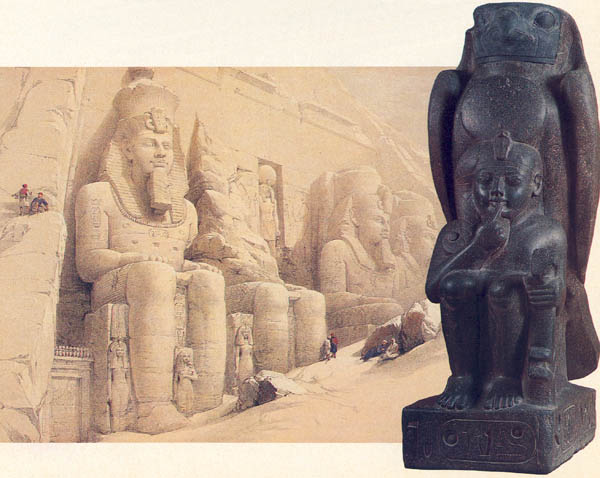Image Details

Kenneth S.Graetz/From Egypt and Nubia by William Brockendon
The Pharaoh embodied divinity, an idea forcefully portrayed in this 7.5-foot-high, gray granite statue with a limestone face (right). The squatting child is Ramesses II (1290–1223 B.C.), often suggested as the Pharaoh of the exodus. He is depicted conventionally: pointing to his mouth, grasping a plant, and bearing a sun-disc above his cap. Behind the child stands a falcon, identified by Egyptians as Horus, which protects the throne and confers kingship on Ramesses II. The hieroglyphics on the pedestal identify the figures.
As one might imagine, a ruler so closely associated with divine authority has few, if any, restraints on his power. In Ramesses II, this led to a virtual mania for extravagant, self-glorifying, construction projects. One such project, the Great Temple at Abu Simbel (left), features four seated statues of Ramesses II, which loom 69 feet above the ground. Although partially buried in the blowing sand when David Roberts made this drawing in 1838, the Great Temple was in danger of inundation by the Nile’s rising waters when the Aswan dam was built. Between 1964 and 1968, a rescue operation dismantled the Temple and reassembled it on the heights above the river.
